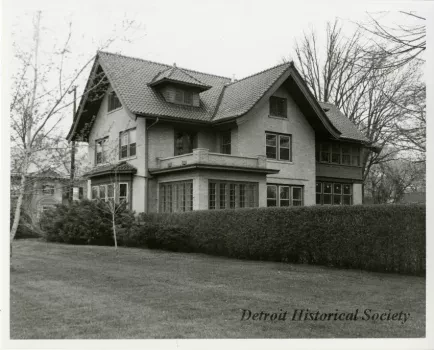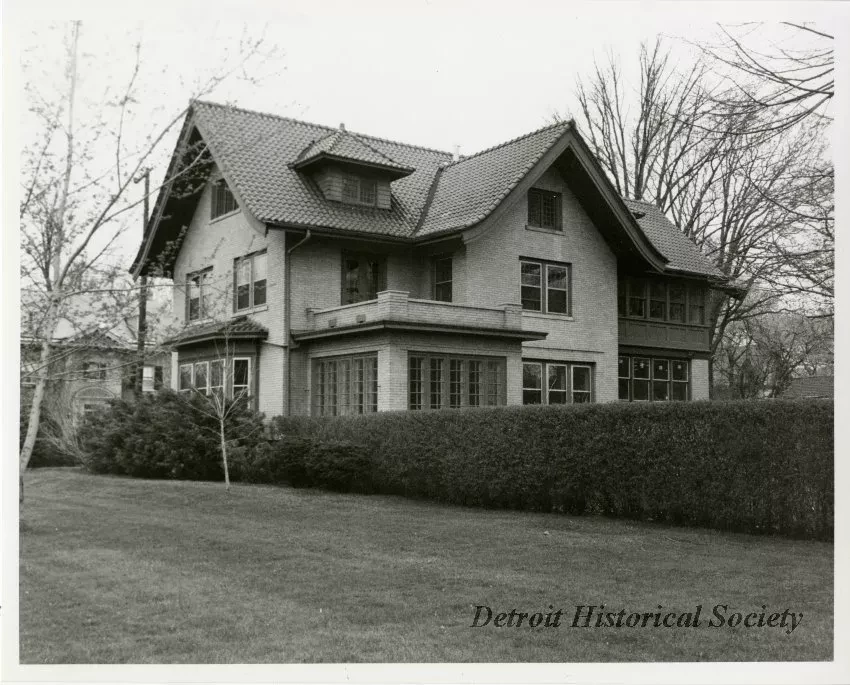Print, Photographic
Black and white photo of the former Robert Craig Hupp home at 1516 Iroquois Street, on the east corner of St. Paul Street, in Indian Village, as taken from Iroquois to the south. A typewritten description previously tape to the verso read:
1516 Iroquois
This striking house was built in 1909 for Robert Craig Hupp, founder of the Hupp Motor Company and originator of the Hupmobile. At the time Hupp lived in the house, his auto enterprise was "riding high," although it is largely forgotten today except by car enthusiasts. Hupp's stay in the house was brief. In 1914 the house was sold to Thomas Neal, Chairman of the Board of General Motors. Thus the house had a very distinguished beginning as the home of two important figures in the early history of the automobile.
The Hupp House, designed by Detroit architect George V. Pottle, is likely Detroit's finest essay in the early Prairie Style, and reflects with considerable accuracy the spectacular designs of Wright in Oak Park and River Forest, Illinois. The influence of Oriental art--especially Japanese art--was quite important in the late nineteenth century. Pottle captured this Oriental quality, particularly in the steeply pitched red tile roof with its wide flared overhangs. The arrangement of the St. Paul Street facade, containing the main entrance to the house, is a study in carefully placed elements which, while not at all symmetrical, are balanced and full of strength. The geometrical leaded or bevelled glass in some windows is typical of the style and adds to the period flavor.


